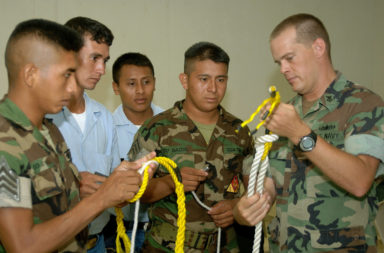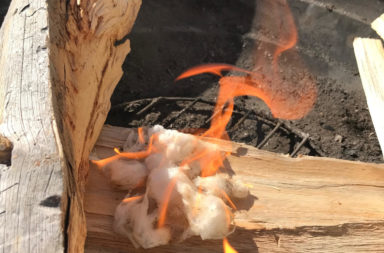Learning how to reload your own ammo could be a vital tactical survival skill during a long-term disaster. Stockpiling copious amounts of ammunition is both a common and valuable prepper practice, but eventually all those boxes of empty could run dry – leaving you with empty brass casings that should not be allowed to go to waste.
Reloading ammunition now, even when you can still run out to the local gun shop and buy more, is a good idea. Assuming you and members of your survival tribe are regularly taking target practice and hunting to stockpile protein (as you should be) you are frequently buying more ammo to replace training rounds.The money you could save by reloading ammo yourself could be used to purchase other valuable preps…like more guns.

Reloading Safety
Ammunition reloading is definitely not an activity that should take place in your kitchen, basement, or even nearby in an attached garage. Reloading must take place in a well-ventilated space that has quality lighting, is not damp – and will not cause harm to anyone not in the immediate vicinity of the reloading table if something goes boom.
A small workshop space, preferably not connected to even a detached garage where flammables are house, will suffice. A sturdy and level work table that is about six feet long, should hold all of the necessary reloading equipment.
Reloading Start Up Costs
Prices for reloading materials and tools will vary depending upon where you shop either in person or online. Typically, you can get the equipment you will need to start reloading your own ammo for no more than $500.
You will need to purchase different die sets to make multiple ammunition calibers. The die are durable and designed for sustained use of many years.
Ammo Reloading Basics
The are four main facets to ammunition reloading.
- Primer – Primers vary by both type and size. You will need to purchase primers that are appropriate for the case and load you are using.
- Bass Casings – Get into the habit of saving your own brass – and the brass left on the ground by others at the shooting range. You can buy empty cases at some gun shops and online to supplement what you forage after taking target practice.
- Bullets – The manual that comes with your reloading kit will help guide you through the bullet purchasing process so you always reload the rounds you are making properly.
- Gunpowder – Refer to your reloading manual to make sure you purchase the proper type of gunpowder to the load you are working with. If the wrong gunpowder is used, or it is not measured accurately, serious injury or death could result when the reloaded round is fired.
Ammo Reloading Supplies And Tools
Not all of the ammunition reloading tools and supplies on this list are essential, but are the ones we have found most useful when loading ammo on our survival homesteading retreat. Reloading Manual
Reloading Press – The heart of any reloading setup, the press literally assembles the entire round. Depending on the press you buy, this can be done one operation at a time, or progressively, which each pull of the lever advancing the round through a different part of the reloading process.
Dies – A different die will be needed for each caliber being reloaded. Dies are generally the most expensive part with getting started in reloading. Carbide dies are the most expensive, but are typically the most durable and may offer greater accuracy during the sizing process.
Vernier Calipers -Use this tool to ensure your cases are trimmed to the correct length per your reloading manual.
Priming Tool – Almost all reloading press brands come with a priming tool attachment. If your machine does not or you simply want a back up, there are three different styles to choose from: hand-held, bench-mounted, and press-mounted.
Powder Scale – The scale is designed specifically for reloading to help ensure the exact amount of powder makes it into the ammo casing. If you do this part even slightly wrong, failure and injury can easily occur. Powder scales come in both manual and electric versions.
Gunpowder – Selecting the proper gunpowder is the most important part of ammo reloading. The variety of gunpowder you use does significantly impact the ballistic characteristics of the round. Your reloading manual should offer complete guidance on the selection of gunpowder.
Shell Holder – All cases will have their own corresponding shell holder. Some reloading die sets include a shell holder. Shell holders can be found to exclusively fit a particular reloading press brand or with universal settings.
Case Trimmer – This tool is used to trim fired cases down to their proper length.
Bullet Puller – When mistakes happen, and you need to take a loaded round apart, this will do the job, and allow you to salvage the bullet, brass and powder.
Powder Dispenser – A dispenser vastly reduces the possibility of human error during the gunpowder measuring process. All it takes is the pull of a single lever to get the powder needed to fill a casing instead of hand measuring each amount.
Case Cleaner- Clean brass is happy brass, and often feeds better in your gun. A good vibrating or tumbling case cleaner is an important reloading tool.
How To Reload Ammo
- Review the brass for any little sign of a defect. If you find an bulging, dent, tiny ding, or other flaw, throw it away and move on to the next case in your stockpile.
- Clean the brass, making sure to wash the inside using a gun cleaning brush or a toothbrush, as well. The cases absolutely have to be completely dry before they can be reloaded. Turn them upside down and allow them to stand overnight before using.
- Lubricate the interior of the cases before putting them in the die if your manual instructs you to do so – and follow the guidelines outlined in your reloading manual.
- Put the brass in the reloading press and lower the handle – pressing both firmly and evenly each time to push out the spent primer and resize properly.
- Raise the reloading press lever to insert a new primer into the cup attachment on the primer arm.
- Put the brass casing into the shell holder.
- Push the primer arm into the ram slot and lower with firm and steady pressure.
- Remove the brass and inspect it for flaws. Make sure the primer is sitting either only slightly beneath the base of the casing or flush.
- Refer the the reloading manual instructions for both the caliber of brass you are working with when filling it with gunpowder.
- Again, referencing the manual, seat the bullet and put the bullet at the noted depth. The bullet must seat in the neck of the casing and be crimped inside the round.
- Place the round into the shell holder – with the bullet end positioned over the open casing. Lower the reloading press handle and crimp it firmly into place.
Once you are done reloading all of the brass casings that you have to work with, clean all of the moving parts on the press, the dies, and anything else that gunpowder might have come into contact with gun cleaning solution. The parts and tools should be allowed to air dry completely before they are stored until the next use.
Reloading your own ammo may sound complicated, but it really isn’t. Once you get started, you’ll get the hang of it in no time flat!
Feature image courtesy of Pixabay.


